Log in or create new account to save this product to your wishlist.
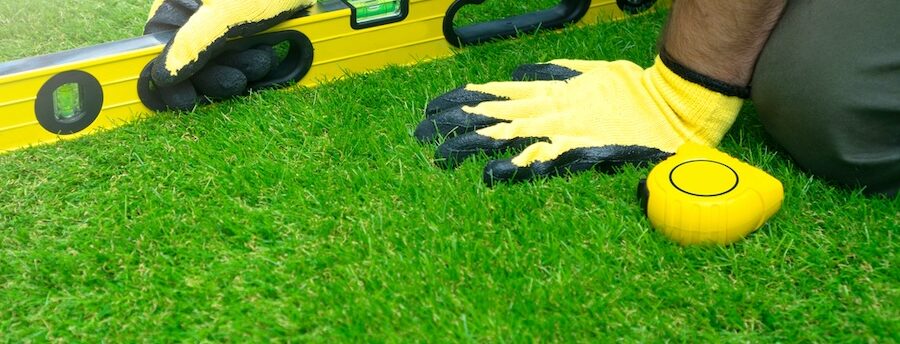
How to Level a Lawn
The secret to a beautiful garden is levelling the lawn. What's the best way to go about it? We are sharing our best tips!
🌱 All important maintenance moments for your lawn during the year. Leave your email and we will send you the lawn calendar for free.
Enter your email
Receive the lawn calendar in the mail
Enjoy a green lawn all year round!

- Order by 2PM = shipped today
- 250.000+ satisfied customers!
- 60 day satisfaction guarantee
Do you gaze at your lawn wistfully, wishing it could meet the dizzy heights of those wonderful plots you see in Downton Abbey? Perhaps you devotedly mow, feed, weed, and scarify, and the results remain unsatisfactory? Maybe it’s time to look at your lawn’s surface — is it level?
- Why is levelling your lawn important?
- How do you know it’s time to level your lawn?
- How do you prepare your lawn for levelling?
- Tools for levelling your lawn
- How to Level A Lawn: a step-by-step guide
- Tips for flawlessly levelling your lawn
- Alternative methods for levelling your lawn
- FAQs
Because without a level canvas, your lawn will always suffer waterlogging, poor growth, and even cause trips and falls.
This article is about how to level a lawn, with a detailed step-by-step plan to help achieve your ultimate turf.
Ready? Let’s go!
Why is levelling your lawn important?
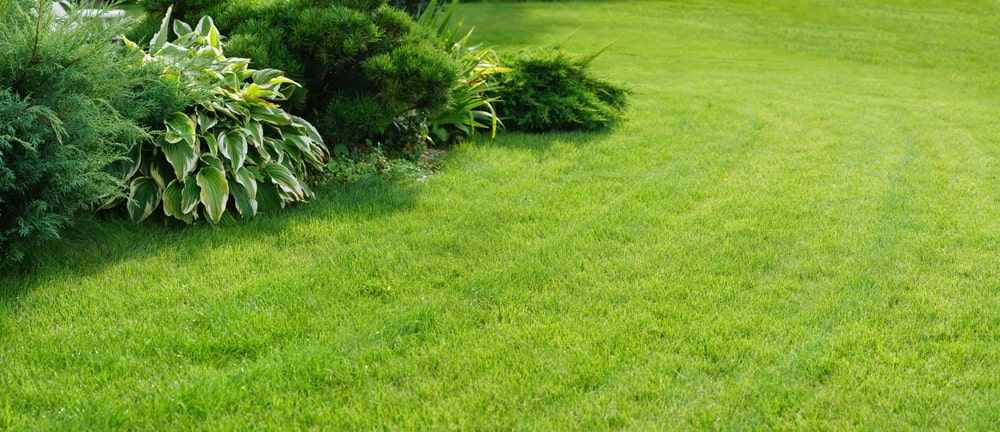
There are several reasons why levelling your lawn is an essential step towards the ultimate turf:
- Better water drainage — maybe you’ve noticed puddles in wet weather, and perhaps the grass plants in those dips struggle in dry weather.
- Improved growth — grass grows best on an even surface, with unevenness causing nutrient deficiencies. This leads to uneven growth.
- More even mowing — your mower typically adapts poorly to dips and overcuts in mounded areas. So, a level lawn surface helps provide a more even and reliable mow.
- A safer lawn — ultimately, an uneven lawn can be a trip hazard, especially for people less sure of their footing.
How do you know it’s time to level your lawn?
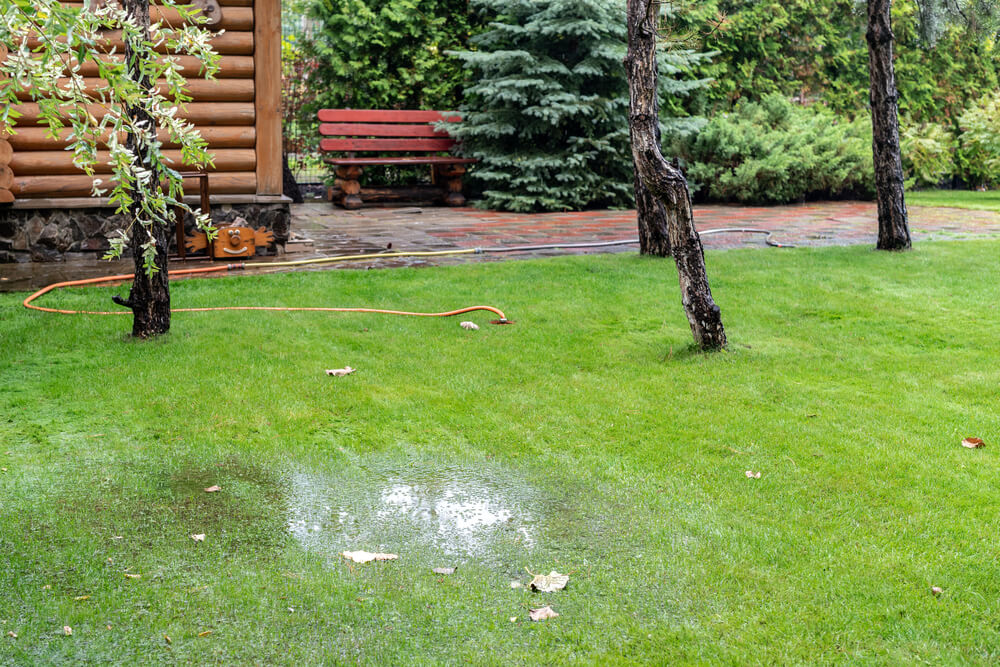
If you spot these telltale signs, it’s time to level your lawn:
Potholes, bumps, mounds, and dips
Walk across your lawn’s surface and feel for lower and higher areas.
Alternatively, roll a football across your turf and see where it stops. Does it settle into dips? Maybe you notice that it rolls away from mounds.
Puddles and poor drainage
If you notice puddles forming in specific areas across your turf, it’s a sure sign of unlevelness.
However, it could also be a sign of heavy or compacted soil, which can be remedied by aerating or topdressing your lawn.
Typically, water should run off your lawn, evenly distributing across the surface and draining into the soil quickly.
Weak, unhealthy-looking lawn patches
You might spot weak or yellowing areas of your lawn. While yellow or brown patches often indicate infestation or disease, uneven drainage can also be the cause.
Check out our article about the 14 Reasons for Yellow Patches on your Lawn.
How do you prepare your lawn for levelling?
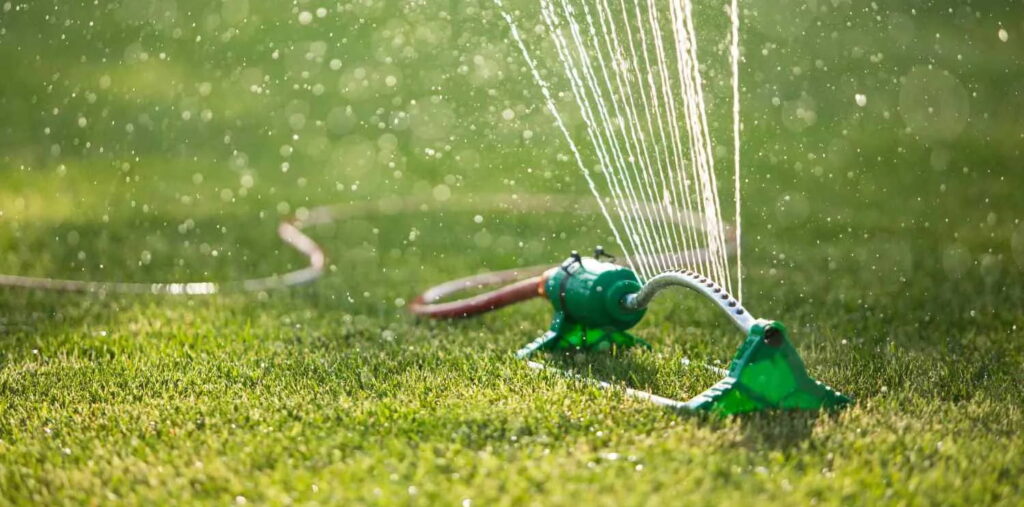
Firstly, mow your lawn — it’s much easier to spot flaws in your turf’s levelness when the grass is short.
Then, attack weed clusters, which can cause soil dips as they drain your soil of nutrients, pushing your grass plants out of the way.
Finally, water your lawn before levelling. This makes the earth more manageable — but avoid overwatering as this can make the soil too soft, leaving a poor foundation for your levelling efforts.
Tools for levelling your lawn
Of course, levelling your turf requires the right tools. Here are the essential devices for successful levelling:
- Garden rake — this helps distribute the soil, working out the lumps and dips.
- Garden roller — this helps press the lighter topsoil into the ground, providing an improved foundation for your turf.
- Shovel or garden spade — these tools help move fresh soil around the lawn.
- Wheelbarrow — you might be surprised at how much topsoil you may need, so a wheelbarrow will help carry heavy earth around your garden.
- Spirit level — this is the essential levelling tool. Getting a perfect flat and even surface is impossible without a spirit level.
- Sod-cutting knife — this can help deal with larger bumps, allowing you to cut away a surface mound, flattening the soil level.
How to Level A Lawn: a step-by-step guide
Now you have all the knowledge and tools to hand, it’s time to get levelling.
Follow this step-by-step guide to make your lawn perfectly even:
Step 1: Identify the problematic areas
Walk across your lawn, paying attention to the dips and bumps. Highlight these areas with line painting spray.
Step 2: Remove the grass and weeds
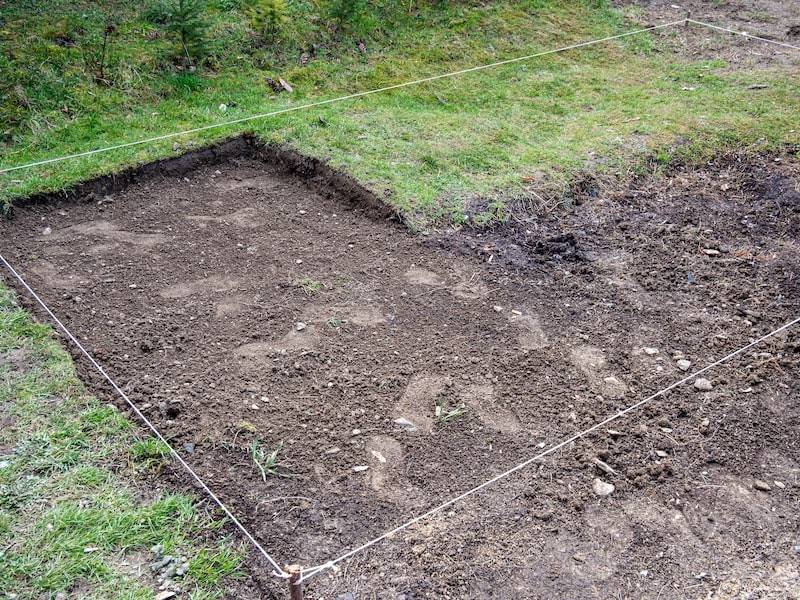
If you’re dealing with large bumps, you may need to remove the existing turf before levelling. Using a sod-cutting knife or a garden spade, carefully lift the turf.
Then, level out the soil below.
Step 3: Level the ground
Using a garden rake, distribute the soil evenly, removing dips and bumps.
Ensure the soil is even with a spirit level. This might seem like a lot of effort, but it’s definitely worth it.
Step 4: Firm up the soil
Using a garden roller, firm the topsoil to prevent drift. Roll the roller in different directions to ensure the soil is pressed as evenly as possible.
Step 5: Check and adjust
Return to your spirit level, ensuring that rolling hasn’t created new dips or bumps.
Step 6: Sow grass seed
Now you’ve levelled out the soil surface, it’s time to sow new grass seed or overseed if you’ve laid topsoil over existing grass.
Cover the bald spots, then press the seed into the earth using your roller. Water lightly but well, avoiding disturbing the seeds.
-
Quick Repair Grass Seed
Out of stock
13.99- Order by 2PM = shipped today
- 250.000+ satisfied customers!
- 60 day satisfaction guarantee
-
Sports & Fun Grass Seed
Out of stock
14.99- Order by 2PM = shipped today
- 250.000+ satisfied customers!
- 60 day satisfaction guarantee
-
Premium Lawn Grass Seed
Out of stock
16.99- Order by 2PM = shipped today
- 250.000+ satisfied customers!
- 60 day satisfaction guarantee
Tips for flawlessly levelling your lawn
Here are some valuable tips to make your lawn more level:
- Begin with small patches, especially if you have a large lawn. This allows you to focus on problematic areas first.
- Aerate your soil — compacted soil will dip over time, so keep heavy clay soil regularly aerated using a garden fork, aerating machine, or aerating sandals.
- Roll in different directions — this helps ensure the topsoil is pressed evenly, making it less likely to shift.
- Maintain your lawn regularly — mow regularly and keep it watered and fertilised. A thick, thriving lawn will hold the soil’s structure more evenly.
- Choose the right lawn seed for your garden’s conditions — the correct lawn seed mix keeps the turf even and healthy. Use our Shade & Sun seed for perfect coverage, even in the shade; or Sport & Fun seed for a more robust lawn suitable for ball games and heavy use.
Alternative methods for levelling your lawn
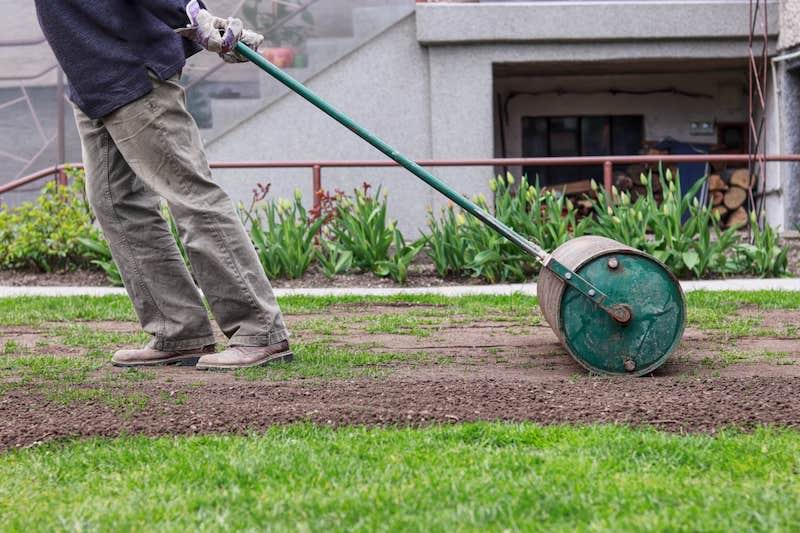
While a garden roller is one of the most effective ways of levelling your lawn, other approaches can work.
Instead of a roller, use a garden rake to distribute the soil evenly. This can be useful if you only want to decrease minor bumps. Then, lay planks across the soil surface and walk across them evenly. Keep using your spirit level while you work.
FAQs
Lawn levelling is best done in spring or early summer to give your grass plants time to bounce back. Choose a dry period and use a rake or garden roller to press the topsoil for greater evenness.
First, walk over the soil surface to identify dips and bumps. Then, remove the turf where there are bumps, level out the soil with a rake, and use a spirit level to ensure levelness. Sow new grass seed to help your existing lawn bounce back.
Use good-quality garden topsoil with no stones, clumps, or compacted areas. It’s worth spending a little extra for the best topsoil, which is less likely to become compacted.
Any questions?
I hope I’ve provided all the answers you might have about how to level a lawn. But if you have any questions, don’t hesitate to email us.
Or explore our comprehensive Help & Advice section for all your gardening and lawn care needs.
Thanks for reading!
-
Orchids: A Complete Guide on How to Care for ThemWant to give your orchid the best possible care? Discover essential tips from placement to watering and pruning. Learn everything you need to know!Read more
-
Growing Wisteria Made Simple: From Planting to Perfect BloomsWith blossoms like a purple waterfall, Wisteria sets an almost magical and colourful mood. If you want to grow this beauty in your garden, you’ll need a bit of patience. Don’t worry, it will most definitely pay off.Read more
-
How to Build a DIY Greenhouse: A Practical Guide for Smart SpendersImagine extending your growing season throughout the year, nurturing tender plants regardless of the weather, and creating a personal garden sanctuary. This is precisely what a DIY greenhouse offers you. Let’s learn how to build one.Read more
-
How to Grow Eucalyptus in British GardensWith a little love and care, eucalyptus trees can thrive in English gardens. Since they don’t germinate well without proper help, there are not considered invasive. So, there is no reason not to plant them if you enjoy their looks.Read more
-
Transform Your Garden with All-Year-Round Flowering PlantsDid you know you can enjoy blooming flowers even in January? With the right selection of all year round plants, there’s no need to wait until spring to add some colour to your garden.Read more
-
How to Create a Butterfly Garden: A Simple Guide for British GardensThe UK's butterfly population includes 59 different species. These beautiful winged creatures face a steady decline because of habitat loss, pollution and changing weather patterns. Your garden can become a vital link between nature reserves and natural habitats. Let’s explore how.Read more
-
Volcanic Rock Dust for Your Garden—Application and TipsDid you know that volcanic rock dust is a brilliant organic soil improver? This article explains exactly what it's good for and how to use it properly.Read more
-
How to Use Landscape Fabric ProperlyIf weeds or erosion in your garden are troubling you, landscape fabric might be the solution. We’ll explain how and when to use it properly, just keep on reading.Read more
Leave a comment
Your answer will be displayed on the site and the interested party will be notified by email.
Leave a comment
Have a question or want to share your experience? Leave us a comment.

- Order by 2PM = shipped today
- 250.000+ satisfied customers!
- 60 day satisfaction guarantee

- Order by 2PM = shipped today
- 250.000+ satisfied customers!
- 60 day satisfaction guarantee

🌱 All important maintenance moments for your lawn during the year. Leave your email and we will send you the lawn calendar for free.
Enter your email
Receive the lawn calendar in the mail
Enjoy a green lawn all year round!



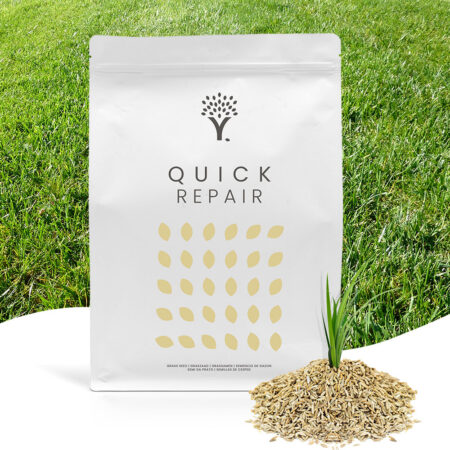
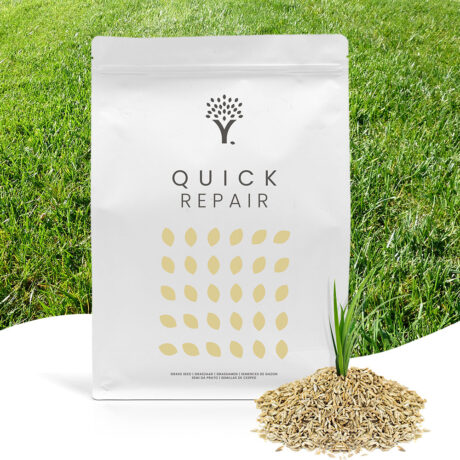
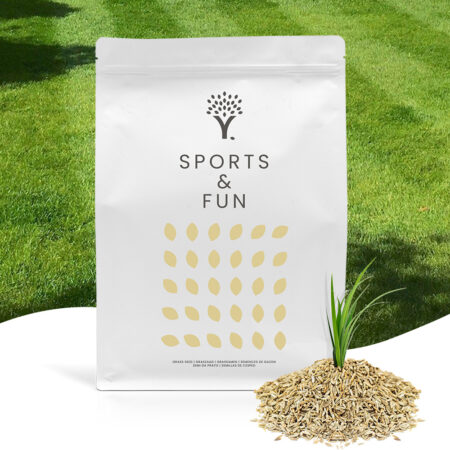
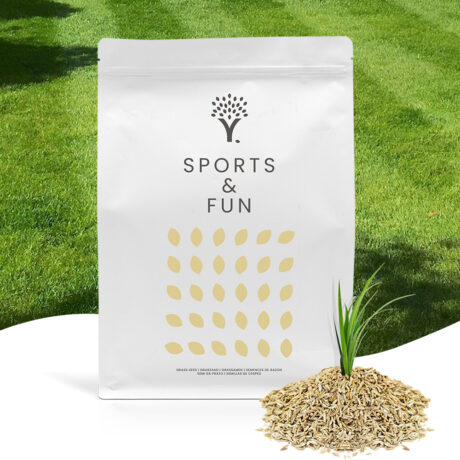

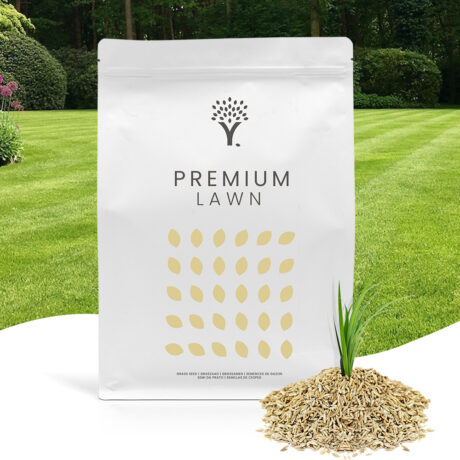



















Comments (0)
There are no comments yet. Well then, what are you waiting for to
Be the first to write your comment!inaugurate this pretty page?
Do you have some comments?